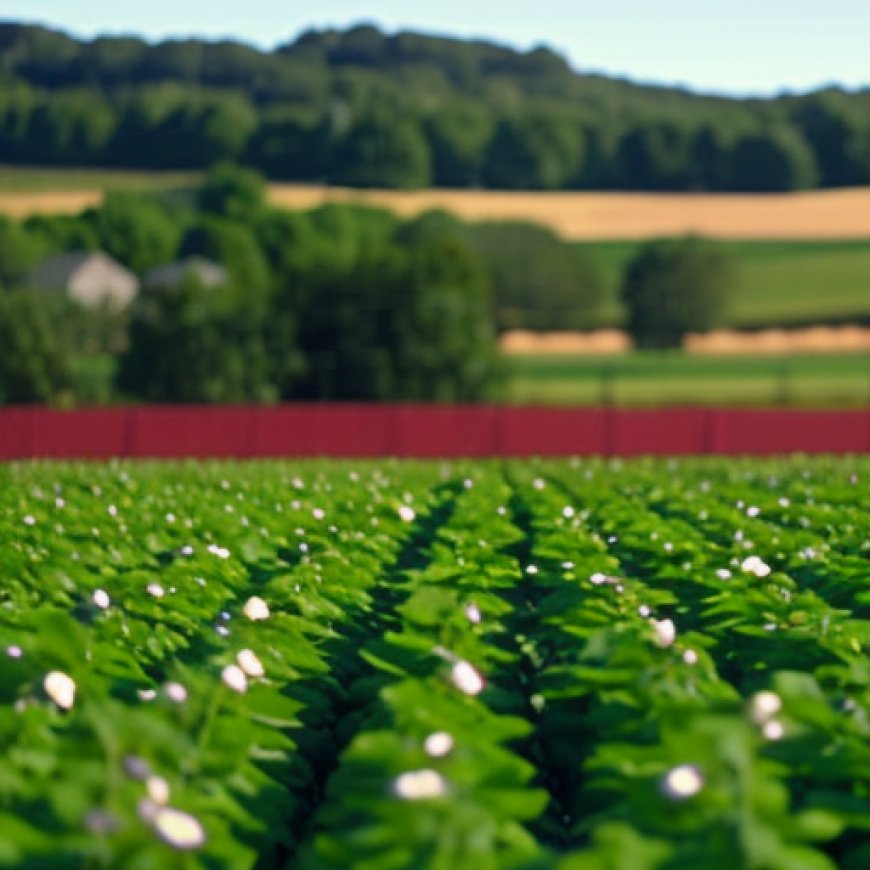Is foreign-owned U.S. farmland a threat to food security? MSU professor weighs in
Is foreign-owned U.S. farmland a threat to food security? MSU professor weighs in WLNS


Is Foreign Land Ownership a Threat to Food Security in the United States?

LANSING, Mich. (WLNS) — According to a Michigan State University professor, foreign land ownership is probably not a potential threat to food security in the United States.
Expert Testimony on Foreign Investment in U.S. Agriculture
David Ortega, an associate professor in the College of Agriculture and Natural Resources at MSU and faculty laureate, provided expert testimony on September 27 to the U.S. Senate Committee on Agriculture, Nutrition and Forestry’s hearing on foreign investment in U.S. agriculture.
Foreign-Owned Land in the United States
Ortega explained that 3.1% of privately owned land in the U.S. is foreign-owned. Out of this, 47% is forestland, 29% is dedicated to crops, and 22% is used as pasture or other agricultural land.
Foreign Governments’ Ownership of U.S. Agricultural Land
Contrary to popular belief, Ortega stated that foreign governments themselves do not typically own U.S. agricultural land.
Countries Associated with Foreign-Owned Land
The majority of foreign-owned land is owned by Canadian interests (31%). Stakeholders from the Netherlands, Italy, the United Kingdom, and Germany collectively own another 31%. Ortega mentioned that stakeholders from China own less than 1% of all foreign-owned agricultural land.
Chinese Ownership of U.S. Farmland
Although Chinese ownership of U.S. agricultural land has received attention due to high-profile acquisitions and increasing tension between the two countries, Chinese-owned U.S. farmland only accounts for 0.03% of all privately owned U.S. agricultural land.
Ortega clarified that the government of the People’s Republic of China, like most other governments, does not directly own any agricultural land in the United States.
Conclusion: Food Security in the United States
In conclusion, Ortega emphasized that foreign ownership of U.S. farmland does not pose a threat to the ability of the U.S. to produce food.
“The U.S. is not only self-sufficient in basic food production, but we also provide food for many across the world. Food insecurity arises in the U.S. not because of production deficits, but because of issues of affordability and access,” Ortega said.
SDGs, Targets, and Indicators in the Article
1. Which SDGs are addressed or connected to the issues highlighted in the article?
- SDG 2: Zero Hunger
- SDG 15: Life on Land
The article discusses the potential threat to food security in the United States due to foreign land ownership. This connects to SDG 2, which aims to end hunger, achieve food security, improve nutrition, and promote sustainable agriculture. It also relates to SDG 15, which focuses on protecting, restoring, and promoting sustainable use of terrestrial ecosystems.
2. What specific targets under those SDGs can be identified based on the article’s content?
- Target 2.4: By 2030, ensure sustainable food production systems and implement resilient agricultural practices that increase productivity and production.
- Target 15.1: By 2020, ensure the conservation, restoration, and sustainable use of terrestrial and inland freshwater ecosystems and their services.
The article highlights the need to ensure sustainable food production systems and resilient agricultural practices to maintain food security in the United States. This aligns with Target 2.4 under SDG 2. Additionally, the discussion on foreign land ownership and its potential impact on food security relates to the need for the conservation, restoration, and sustainable use of terrestrial ecosystems, as stated in Target 15.1 under SDG 15.
3. Are there any indicators mentioned or implied in the article that can be used to measure progress towards the identified targets?
- Indicator 2.4.1: Proportion of agricultural area under productive and sustainable agriculture.
- Indicator 15.1.1: Forest area as a proportion of total land area.
The article mentions the proportion of privately owned U.S. land used for agriculture, forestland, crops, and pasture. This information can be used as an indicator to measure progress towards Indicator 2.4.1, which focuses on the proportion of agricultural area under productive and sustainable agriculture. Additionally, the article mentions that 47% of privately owned U.S. land is forestland, which can be used as an indicator for Indicator 15.1.1, which measures forest area as a proportion of total land area.
Table: SDGs, Targets, and Indicators
| SDGs | Targets | Indicators |
|---|---|---|
| SDG 2: Zero Hunger | Target 2.4: By 2030, ensure sustainable food production systems and implement resilient agricultural practices that increase productivity and production. | Indicator 2.4.1: Proportion of agricultural area under productive and sustainable agriculture. |
| SDG 15: Life on Land | Target 15.1: By 2020, ensure the conservation, restoration, and sustainable use of terrestrial and inland freshwater ecosystems and their services. | Indicator 15.1.1: Forest area as a proportion of total land area. |
Behold! This splendid article springs forth from the wellspring of knowledge, shaped by a wondrous proprietary AI technology that delved into a vast ocean of data, illuminating the path towards the Sustainable Development Goals. Remember that all rights are reserved by SDG Investors LLC, empowering us to champion progress together.
Source: wlns.com

Join us, as fellow seekers of change, on a transformative journey at https://sdgtalks.ai/welcome, where you can become a member and actively contribute to shaping a brighter future.







